20 New Things: Joomla 2.5 vs. Joomla 3.0
Joomla has recently released the Joomla 3.0.0 version on September 27th, 2012 with significant updates and major developments. Following right up with the immediate upgrade version Joomla 3.0.1 for security fix on October 9th, Joomla 3.0 is indeed the hot spot for this month. If you haven’t become familiar with it yet, here are the 20 things that are worth taking note in Joomla 3.0.
1. Non-Responsive vs. Responsive
Yup, Joomla is now officially responsive – mobile device ready, due to the help of Bootstrap. The front-end will have the responsive built-in feature, the back-end also inherits this tweak. You will NOW officially be able to get your site under control even when you are ”on-the-go” with just a mobile device!
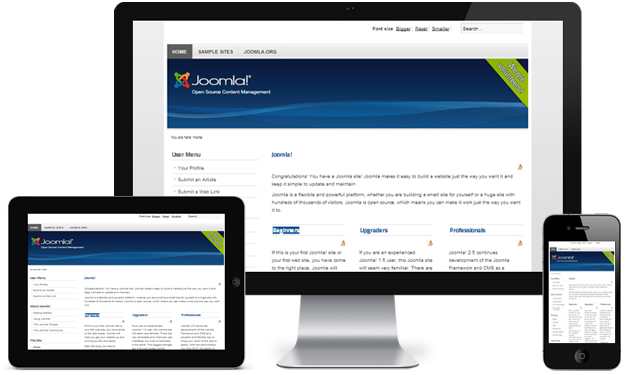
The Joomla 2.5 Front-end
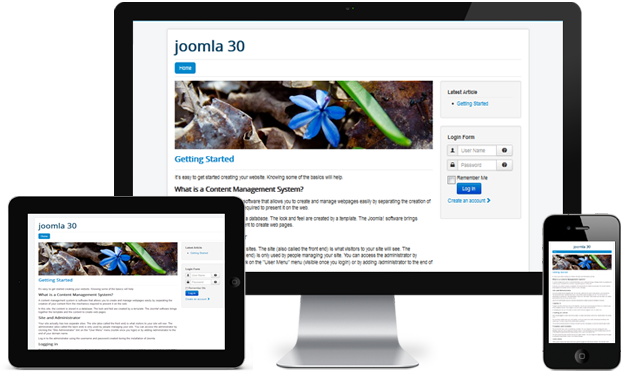
The Responsive Joomla 3.0 Front-end
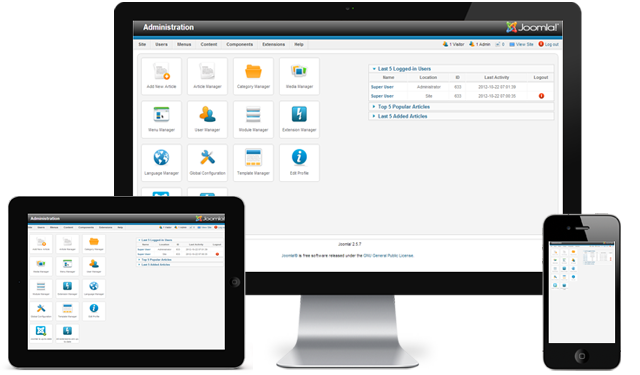
The Joomla 2.5 Back-end
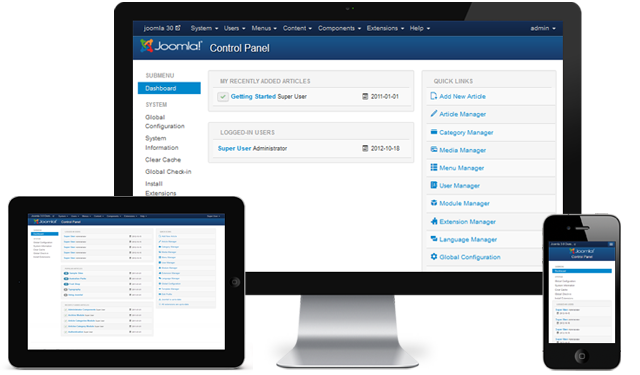
The Responsive Joomla 3.0 Back-end
2. Without bootstrap vs. With bootstrap
The big word for Joomla 3.0 is Bootstrap. With basic CSS already integrated into Joomla 3.0, it is aiming for a much better UX for the end-user.

Bootstrap for Joomla 3.0
3. Non+ -LESS CSS vs. LESS CSS
LESS is a dynamic stylesheet language designed by Alexis Sellier and has recently been integrated into Joomla 3.0. The development of a template has significantly changed by the use of LESS. All the website templates and backend will include /less directory and template.less files. Those two are meant for importing both Bootstrap and JUI (less files and media/jui/less files). That enables the template designers to define which file should be applied to their template, and which one will be imported to the LESS JUI.
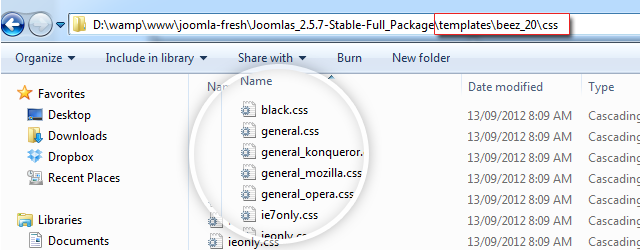
Without Less, Joomla 2.5 uses CSS to style

vs. Less in Joomla 3.0
4. Without JUI vs. With JUI (for Extension Developers)
The Joomla User Interface (JUI) library provides a common set of tools that enables component developers to share a common ground of elements, drastically reducing time in coding, without having to innovate and create their own library but still having a clean, nice looking interface. In addition, the loading time is dropped dramatically for users who are surfing around from one Joomla 3.0 site to another, as the javascript and css files are already loaded, adding an extra fast loading speed for the Joomla 3.0 CMS.
5. The Mambo days vs. the Great UX
No longer will you be bored with the old-fashioned interface, Joomla 3.0 did a major improvement on UX that would amaze and make all of us – the fans – fall in love all over again, starting with:
- The Main Menu

The Joomla 2.5 main menu

Main menu in Joomla 3.0 back-end
- Dashboard with the new look for administrator statistics module
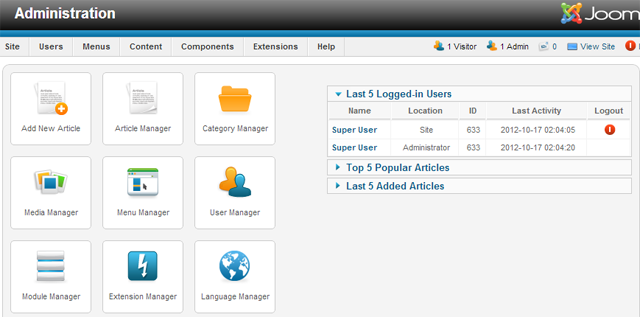
Joomla 2.5 dashboard
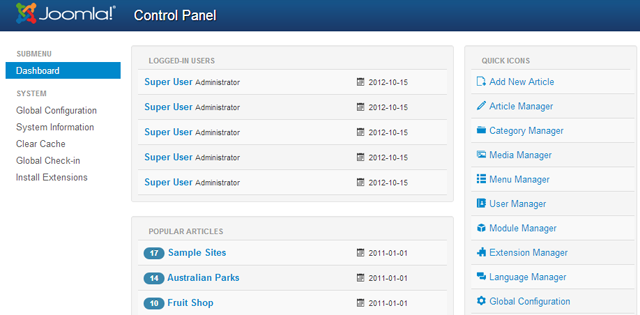
Joomla 3.0 dashboard
- Administrator submenu is now located in the left panel
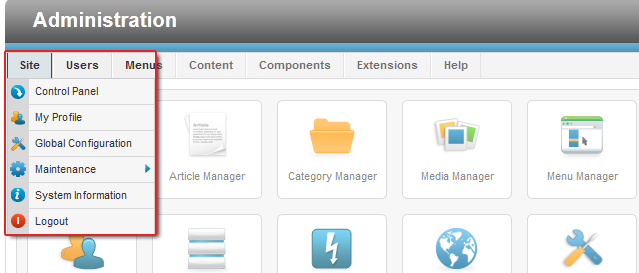
The only menu style that you'll find in Joomla 2.5
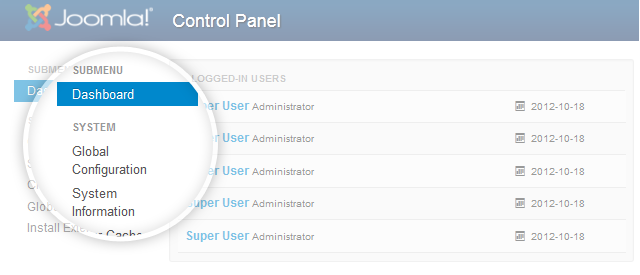
Complemented menu on the left panel in Joomla 3.0
- A redesigned footer menu for quick status view of your site and a new location for the preview link

Footer menu in Joomla 3.0
- The right panel includes a list of commonly used features
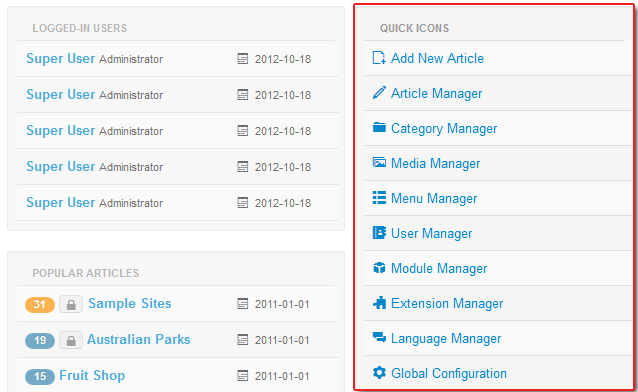
Commonly used features quick icons are located on the right panel in Joomla 3.0
6. 7 steps vs. the faster 3 steps installation
Right off the bat, you will immediately feel the ”difference" in UI of the complete redesigned installation screen in Joomla 3.0. The installation process is now simplified in only 3 steps compared to the 7 steps procedure we had with joomla 2.5.
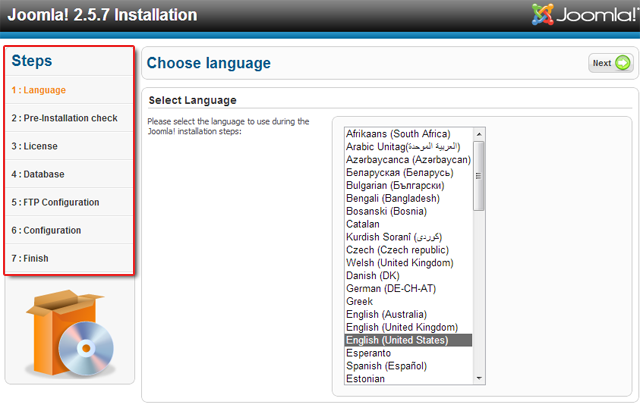
Joomla 2.5 installation screen with the original 7 steps procedure
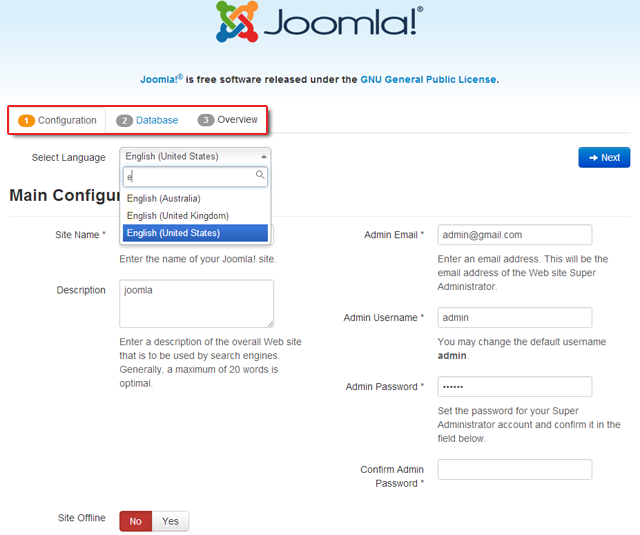
The 3 steps installation for Joomla 3.0
The installer will auto-detect your language from your browser and the "Yes | No" option is now designed in a color coded button: Yes (Green) | No (Yes)

The old days Yes | No check-box style
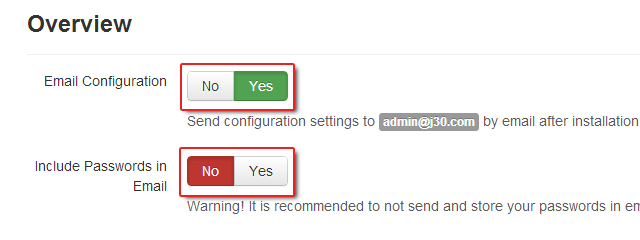
vs. New design for your Yes | No button
In this new version, Joomla supports five sample data sets instead of only three in Joomla 2.5.

3 sample data sets on Joomla 2.5
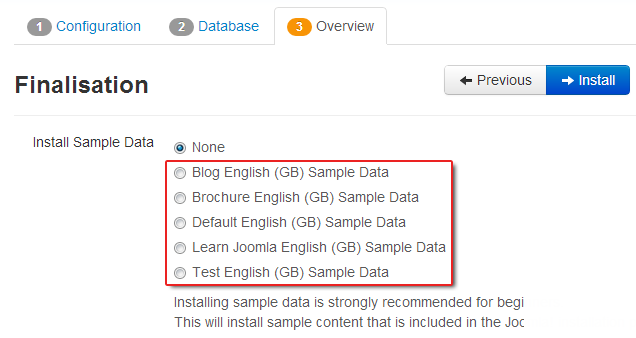
vs. 5 sample data sets on Joomla 3.0
The whole process has tremendously cut back installation time to less than 1 minute, which is a huge improvement for the installation process. Plus, you can save the installation settings for later use by sending it to your email address.
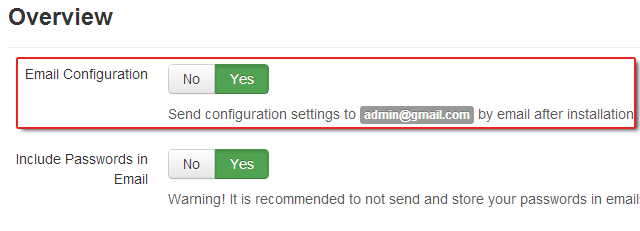
Get the installation settings sent to your inbox
7. Article Manager interface: boring vs. polished
In the back-end, you’ll find a completely refreshing look and feel starting with the Article Manager which now includes a better organized filtering system with more options available, and better defined icons.

The old Article Manager look

Filter friendly and defined icons in Article Manager
Article edit screen has had its own redesign with Publishing Options, Article Options and Metadata Options tabs moved from their usual right panel to the top, the text editor is now up-front and centered.
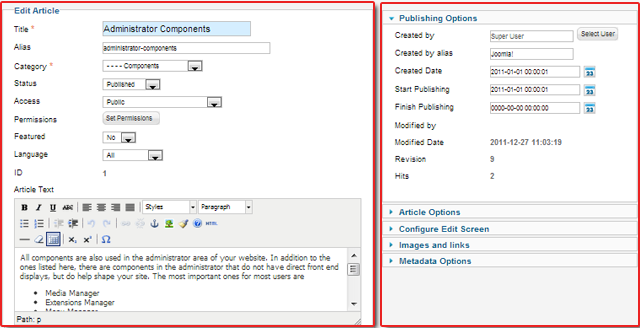
Article edit screen in Joomla 2.5
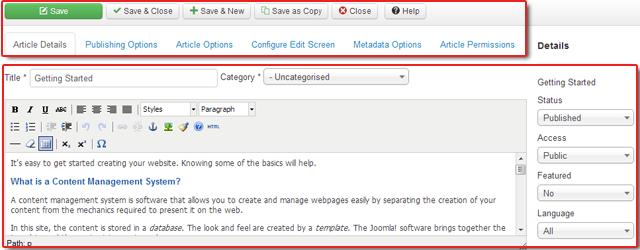
vs. Article edit screen in Joomla 3.0
8. Guest user group: Manually creating as needed vs. Automatically available by default
Now you don’t need to bother creating a “guest” level group in Joomla 3.0. It is now available as default upon installation.
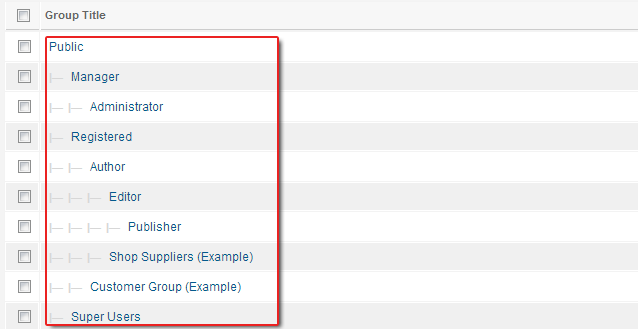
There is no sign of Guest user group upon the complete installation of Joomla 2.5

Guest user group is present as default in Joomla 3.0
9. Non-responsive Front-end template vs. Responsive Front-end template
This new responsive minimal front-end template – Protostar – powered by Bootstrap that you’ll find to be versatile and it is simple to customize the template colors by taking advantage of the color picker. Google fonts are allowed in Protostar with a parameter for your heading tag (h1-h6) and site title. You can toggle on or off the parameter in deciding whether or not to use Google fonts for your site, meanwhile that means you are giving up a wide range selection of 500+ google fonts to choose from. Protostar also has a completely natively clean bootstrap customized grid-layout look, it sets a new standard for Joomla template itself.
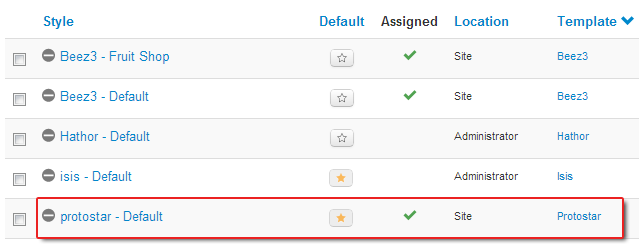
Brand new Protostar template
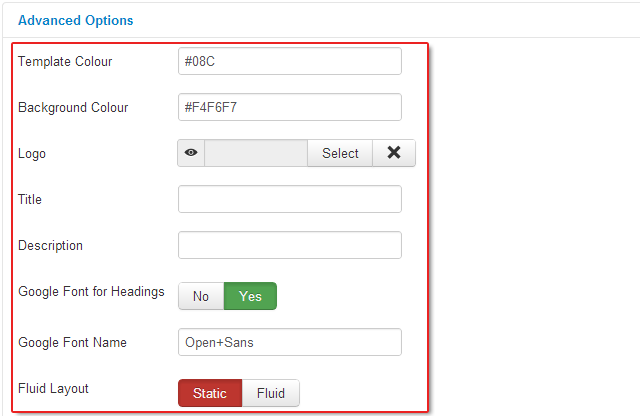
Protostar offers a variety of customisation options for users
10. The same old admin template vs. The slick admin template
Joomla 3.0 named its new administrator template after the Egyptian goddess Isis. Compared to the Bluestork administrator template in Joomla 2.5, Isis has been perceivably designed differently. Since the Isis template is built using the flexible Bootstrap grid layout, the administrator interface Isis is also responsive.
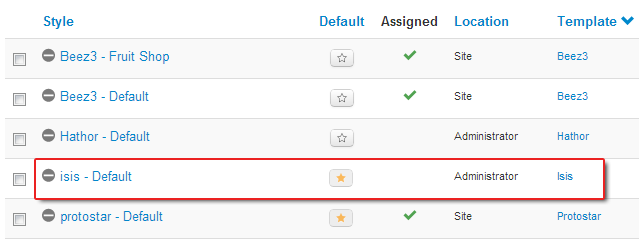
Isis - The Joomla 3.0 administrator template
11. Template Beez3: Updated
If you would like the traditional look for the front end, an updated Beez3 template is the other template option which is still available.

Beez3 template in Joomla 3.0
12. Joomla Platform version 11.x vs. 12.x
The new Platform has removed numerous deprecated classes and methods from version 11.4. However, for extensions developers, your components would require reasonably small changes for compatibility with Joomla 3.0. It is advised to stop using deprecated classes as they are meant to be removed in a future version anyway. Several changes in extensions installation (usage of
13. Mootools vs. JQuery
Joomla 3.0 is packaged with JQuery in the core. Though the Mootools option is still available in the back-end, it will be initially available for the sake of backward compatibility and is no longer the primary javascript library interface.
14. Manual rearrangement vs. Drag & Drop feature
Thanks to JQuery, Joomla 3.0 finally supports a Drag & Drop sorting feature in the back-end.
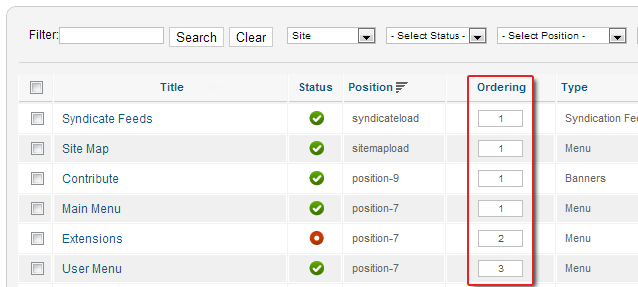
Remember the time when we have to re-order it "manually" in Joomla 2.5?
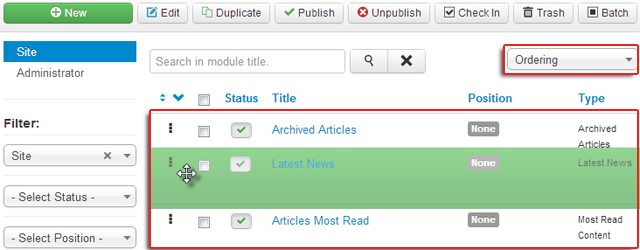
Say "yes" to the new Drag & Drop feature for sorting elements in Joomla 3.0
15. Lower vs. Higher PHP/MySQL requirements
You must have PHP 5.3.1 and MySQL 5.1 or newer to get your Joomla 3.0 up and running while Joomla version 2.5.x only requires PHP 5.2.4 and MySQL 5.0.1.
16. Normal settings vs. Advanced module option
The advanced module settings allow you to modify:
- Module tag: to change the div in section
- Bootstrap size: changing Bootstrap span grid class
- Header tag: which aims for better SEO
- Header class: adds the Bootstrap class in the page header
- Module style: to inherit the Joomla installed template for the module styling.
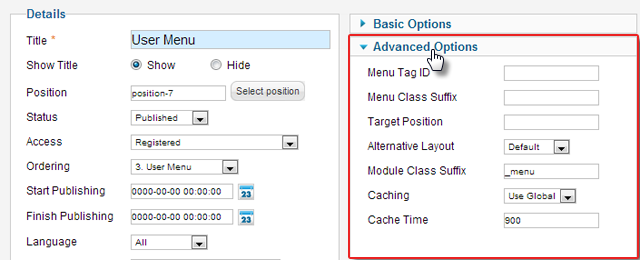
Your usual and limited module settings in Joomla 2.5
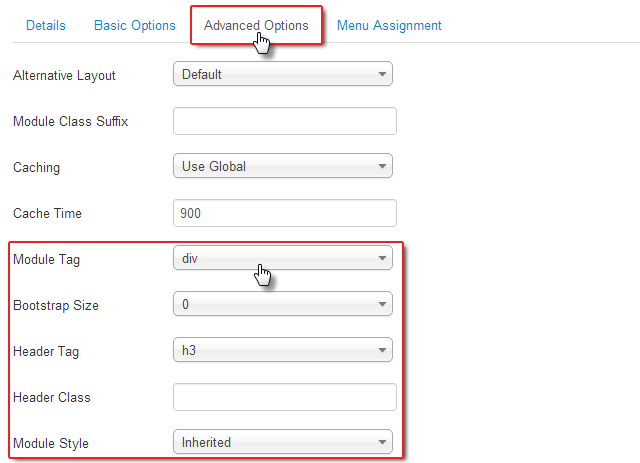
Advanced module settings in Joomla 3.0
17. Simple Pie vs. JFeed
Switch the feed management from SimplePie to JFeed to get rid of several existing strict error, due to the fact that Simple Pie has been quite old and no one has really done any update on its library for a while now. On the other hand, Simple Pie’s users are confronted with its crucial errors and lack of flexibility for the current version. This encourages Joomla 3.0 to step up with the use of Louis Landry's JFeed, which is claimed to be simple, extensible and native Joomla contribute to the enhancement of feeds generator in a better and powerful way that Simple Pie wouldn’t allow.
18. Non-supported vs. A new PostgreSQL driver is included
You are now able to run your Joomla 3.0 site using PostgreSQL database which further makes the platform ”database independence" for the very first time as it is only integrated with MySQL & SQL server by default.
19. Saving full-detailed articles vs. Saving blank articles
Surprisingly, Joomla 3.0 allows administrative users to create and save blank articles. This feature strives for support users to create articles with even images only and no text content as needed.
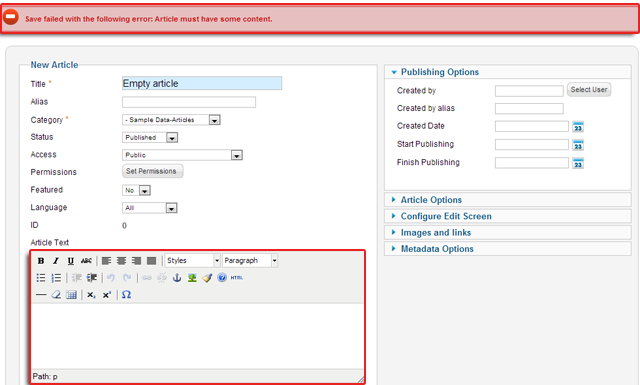
Articles with no content will not be allowed to save in Joomla 2.5
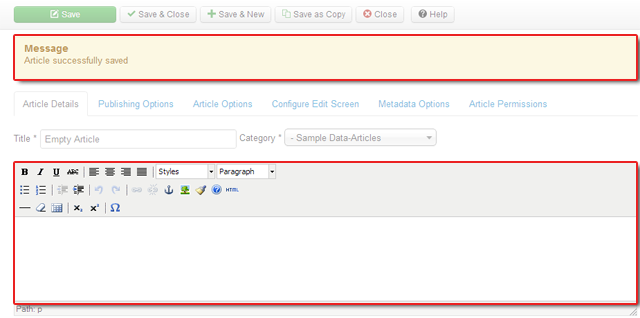
No worry! Saving blank articles are NOW acceptable with Joomla 3.0
20. Updated unit testing in CMS
Unit testing is aiming for testing small chunks of code (or we can call them units) on the lowest level possible, usually are methods without including any other classes or methods, to ensure those methods are working as expected. The old unit test was untouched sometimes between version 1.6 and 1.7 which suited the PHPUnit version 3.4. With the updating of CMS version Joomla 3.0 which requires the minimum of PHP 5.3.1 as a minimum version, the new unit test will be developed to prevent backward compatibility from being broken and other cases as necessary (e.g security problems). The Unit test has set its goal to automate the testing process and achieved 100% unit test coverage for the CMS library classes. Details on the phases of the unit testing for Joomla 3.0 can be found at Unit tests for CMS Working Group.
Some articles published on the Joomla Community Magazine represent the personal opinion or experience of the Author on the specific topic and might not be aligned to the official position of the Joomla Project
By accepting you will be accessing a service provided by a third-party external to https://magazine.joomla.org/
 Community Magazine
Community Magazine 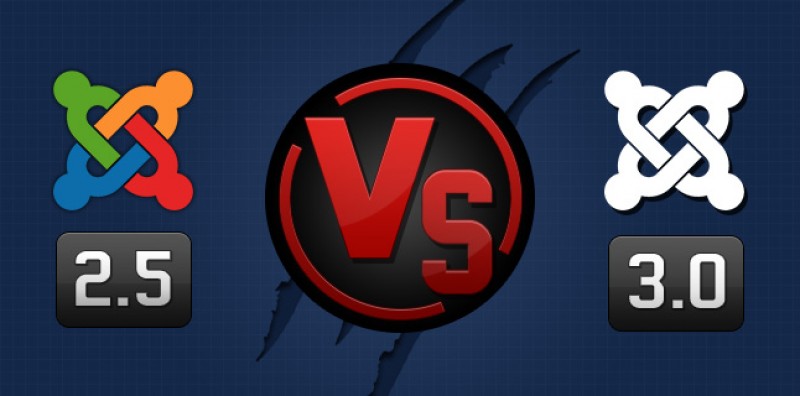
Comments